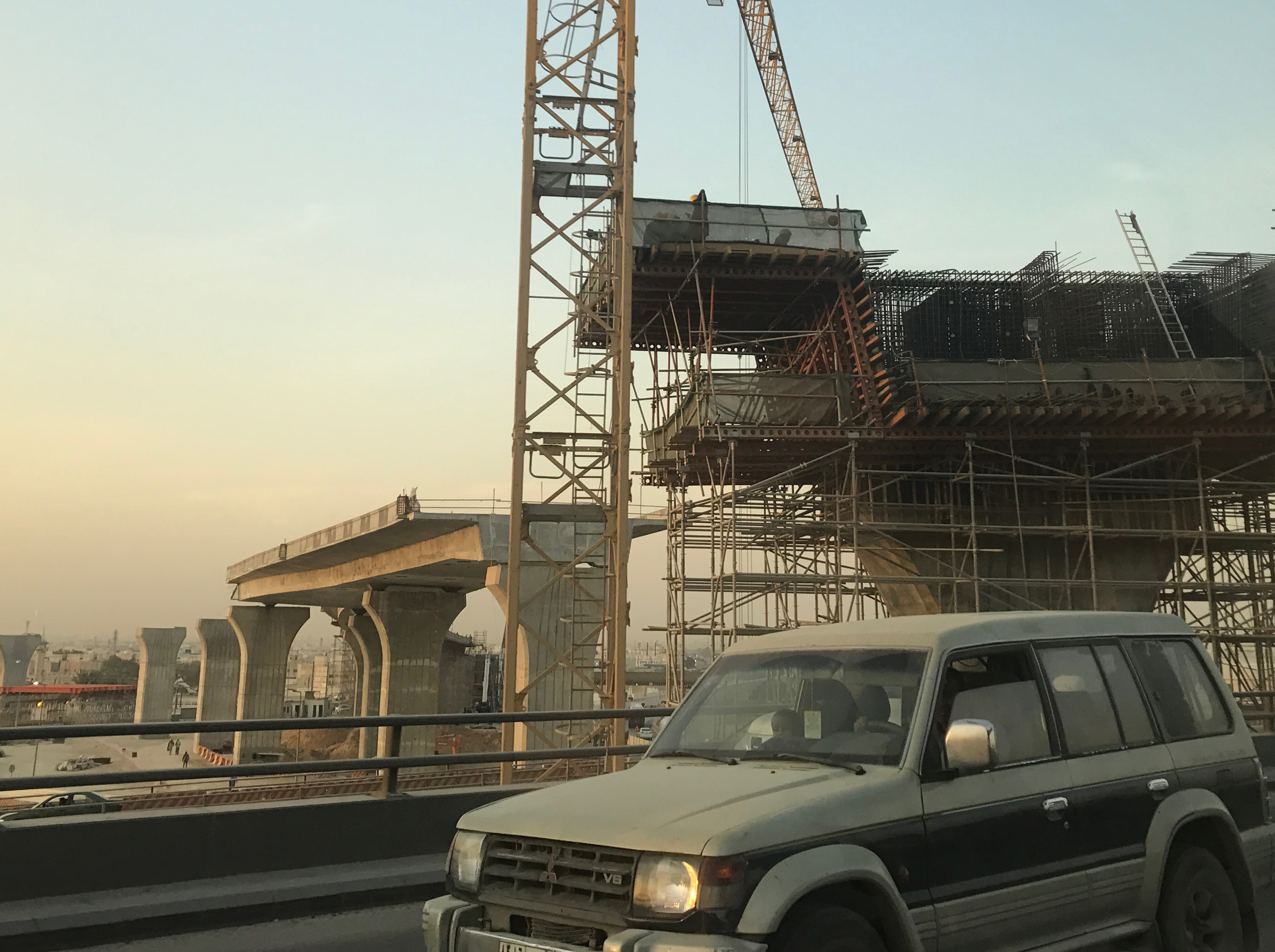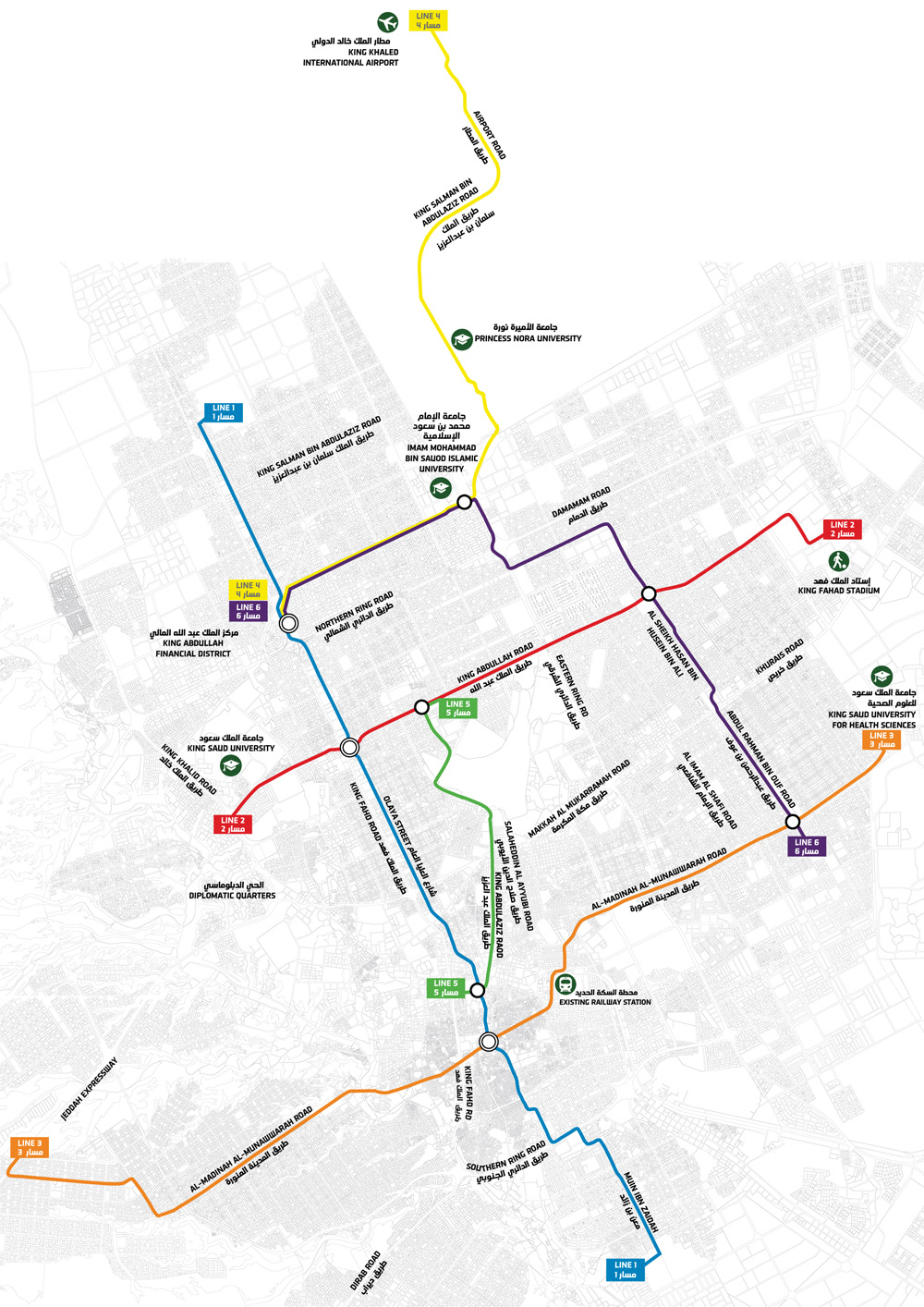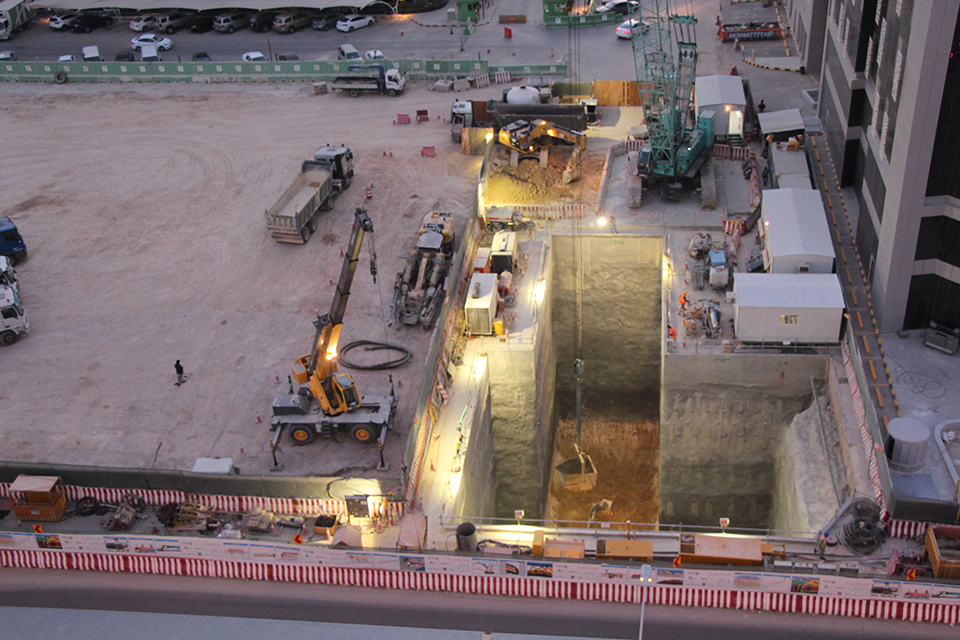Tunnel excavation for Line 3 of the under-construction Riyadh Metro – the longest line of the six total being created as part of the project – has been completed, according to a report.
Line 3 is also known as the Orange Line and is more than 25 miles long, of which almost 7 miles will be underground, according to a report in the New Civil Engineer. It is a mixture of bored and cut and cover tunnel. Once complete, the line will have 22 stations. In total, the six metro lines will have 85 stations and nearly 110 miles of track.
In addition to rail, a new bus system is being built and implemented simultaneously for the city. The total cost for the entire project is slated to top $23 billion.

A portion of the Riyadh Metro under construction as of January 2017.
The project is expected to be completed by 2019. Questions swirled around the completion date and whether the economic downturn related to a fall in oil prices would delay the project like others across the country. But a Reuters report in May of 2016, citing a senior official, said the project would be completed on schedule in 2019 and its budget is ring-fenced.
Saudi Arabia’s capital city is often snarled by traffic jams and deadly accidents, as well as difficult-to-navigate and outdated road designs that make for circuitous journeys when traveling short distances in the city. The Kingdom’s solution to those problems and other transportation woes is the Riyadh Metro project, which is the biggest urban mass-transit system that’s ever been created from scratch.
Riyadh’s population of nearly 6 million is forecasted to increase to 8 million by 2030.

The Riyadh Metro network.
International design firms have been contracted to design many of Riyadh’s metro stops. Famed architecture firm Zaha Hadid designed the station at the King Abdullah Financial District stop. Other architect and design firms include Snohetta from Norway, Gerber Architekten from Germany, and Saudi-based Omrania & Associates.
Like other public spaces in Saudi Arabia, train cars will be separated internally to accommodate for male and family sections, as well as other service classes.
The metro project is being spearheaded and managed by the Arriyadh Development Authority (ADA), and the six lines will connect the Kingdom’s downtown areas with suburbs and the city’s airport according to following:
Powering the metro line will require the 12 main power plants to feed the project, of which 4 plants with a capacity of 389/33K will be built from scratch, the ADA says on its website. The other 8 plants are already in service but their capacity will be expanded.
-The first line (blue line): axis of Al-Olaya – Al-Batha – Al-Hayer roads, with a total length of 23.6 miles.
-The second line (red line): axis of King Abdullah Road, with a total length of 15.7 miles.
-The third line (orange line): axis of Al-Madinah Al-Munawarah Road – Prince Saad Bin Abdurrahman I Road, with a total length of 25.2 miles.
-The fourth line (yellow line): axis of King Khalid International Airport Road, with a total length of 18.4 miles.
-The fifth line (green line): axis of King Abdulaziz Road, with a total length of 8 miles.
-The sixth line (violet line): axis of Abdurrahman Bin Awf Road – Sheikh Hassan Bin Hussain Bin Ali Road, with a total length of 18.6 miles.









